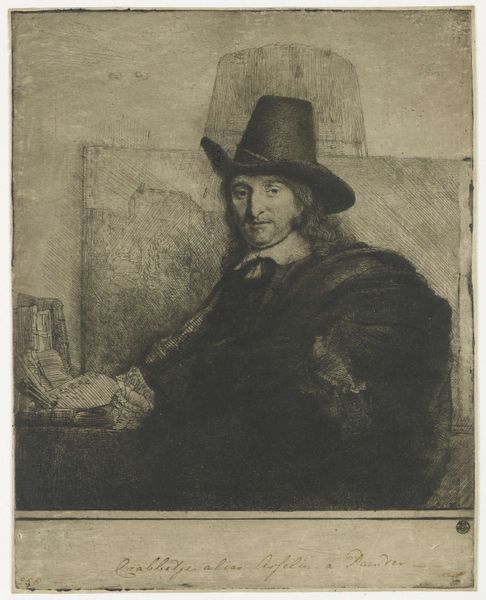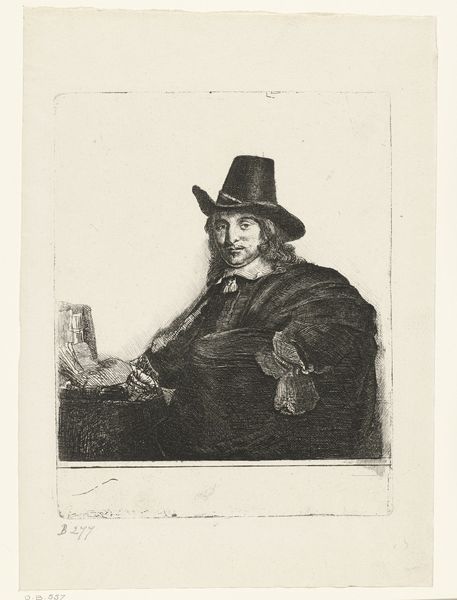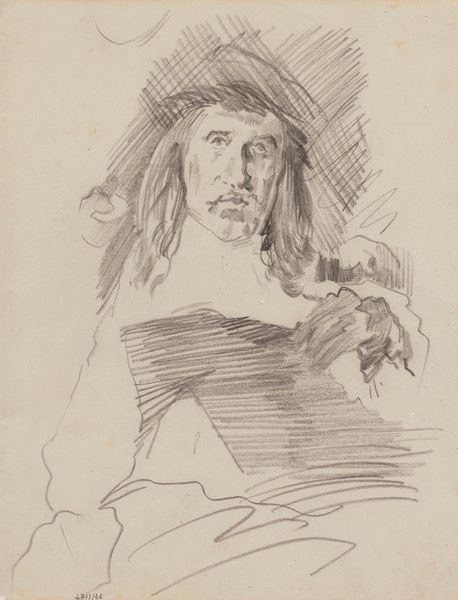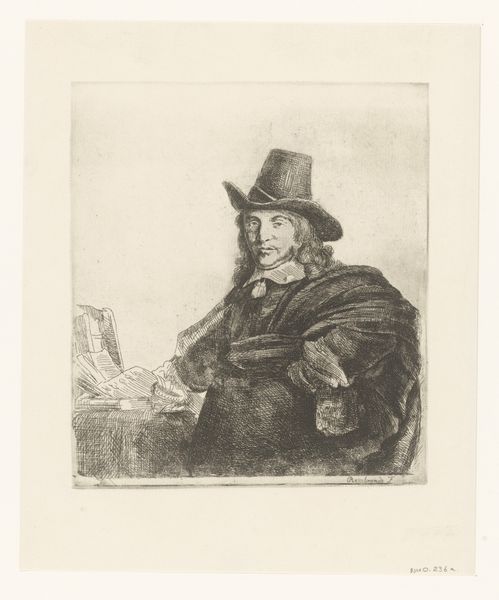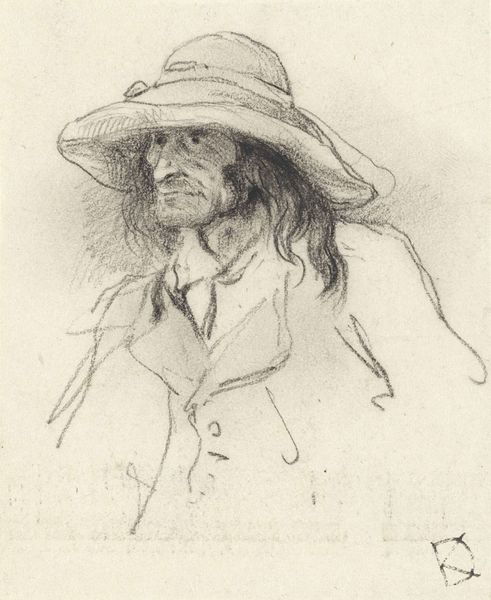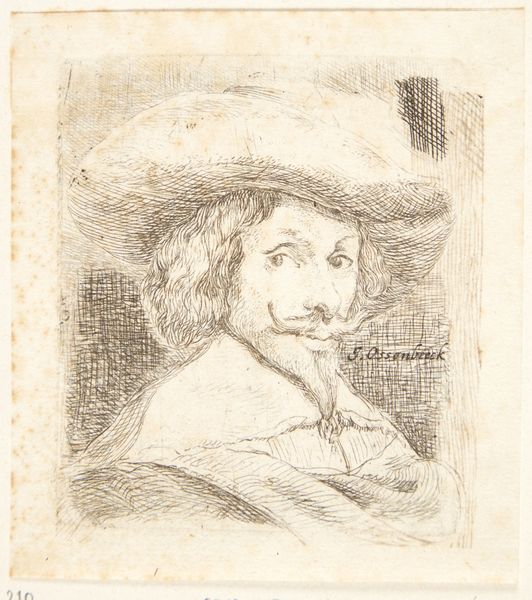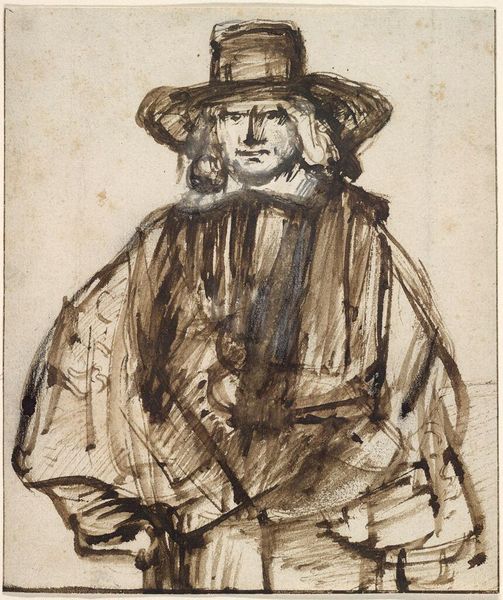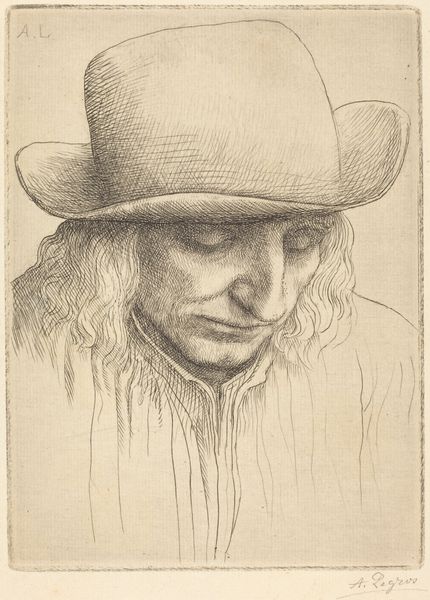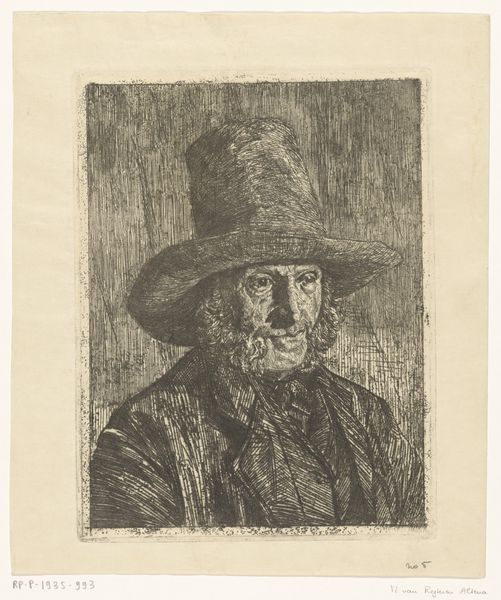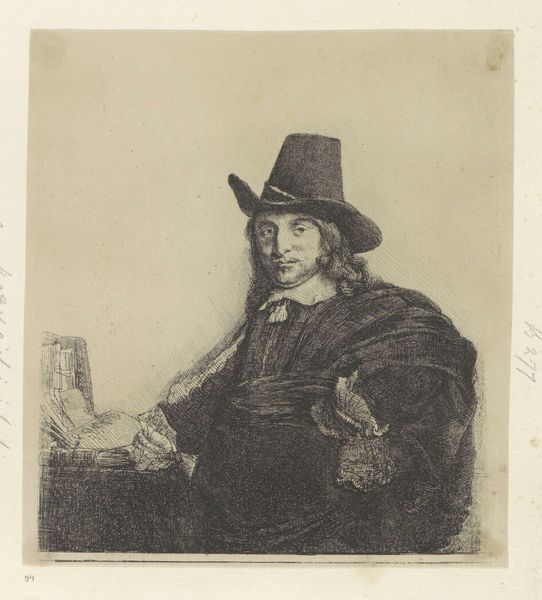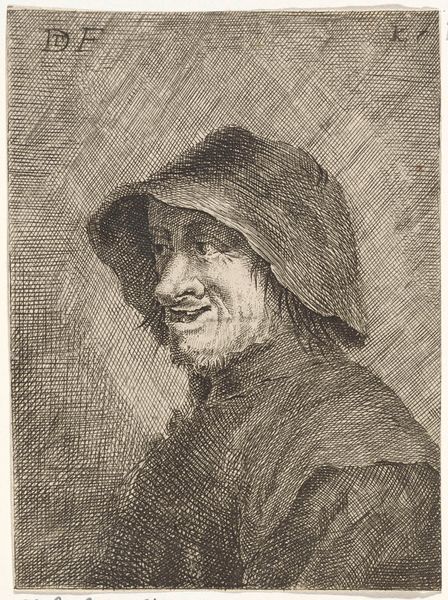
drawing, ink, pen
#
portrait
#
drawing
#
ink
#
pen
Copyright: Public Domain: Artvee
Curator: Let's turn our attention now to James Ensor's ink drawing, "The Painter Jan Asselijn or 'Crabbetje,'" created between 1880 and 1886. Editor: Immediately, I’m struck by the starkness of it, that potent contrast between the heavy lines and the untouched paper. It projects a feeling of austere immediacy. Curator: The hatching and cross-hatching, so characteristic of ink work, here delineate not only form but also a rather dramatic chiaroscuro effect. Note how the density shifts, modulating our reading of the planes and volumes within the portrait. Editor: It speaks to the physical act of making. I see Ensor's hand moving, pressing, the pen leaving a dark trail. And this becomes, for me, an artifact of the labour involved in producing this image, making visible a certain artistic performance. The materials dictate so much. Curator: The figure himself is positioned confidently, almost confronting us, with a distinct directness of gaze. It provokes a compelling and psychological inquiry on the sitter's internal state and what he might be intending for his audiences. Editor: And, interestingly, that labor connects Ensor with his subject. By representing Asselijn, another artist, he acknowledges a shared tradition and practice of production. It is the hand recording the hand. Curator: A subtle yet evocative testament to the artmaking practice itself, then, refracted through both process and historical awareness. Editor: For me, focusing on process, I see the means of making intersecting with social contexts: artistry represented as a material manifestation within societal forces of labor.
Comments
No comments
Be the first to comment and join the conversation on the ultimate creative platform.
